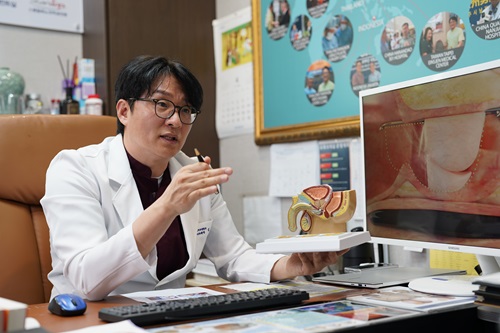South Korea Urology Clinic...hospital seoul
Benign prostatic hyperplasia bph medications
Benign prostatic hyperplasia bph treatment·symptoms
genitourinary syndrome of menopause
genitourinary cancer South Korea
As of 2020, South Korea's life expectancy is 83.5 years. However, the age at which one can live without health issues, known as "healthy life expectancy," is only 66.3 years. While aging is inevitable, extending healthy life expectancy through regular health check-ups, improving dietary habits, and early treatment is possible. Mainly, middle-aged and older individuals experience physical aging and hormonal imbalances that can signal health concerns. Benign Prostatic Hyperplasia (BPH) is a typical example of a reproductive organ disorder, and it is crucial not to neglect it as it can lead to secondary complications. Therefore, we have explored reproductive organ disorders that middle-aged and older individuals frequently encounter and their treatment options at specialized medical centers. - Editor's Note

Benign Prostatic Hyperplasia (BPH) is a condition in which the prostate gland, unique to males, enlarges. The prostate naturally grows larger as men age. It is discovered in approximately 60% of men in their 60s, 70% in their 70s, and 80% in their 80s.
BPH typically progresses slowly and often goes unnoticed. Common symptoms include frequent urination (nocturia), hesitancy in urination (straining), forced urination (weak flow), intermittent urination (intermittency), incomplete emptying (incomplete voiding), post-void dribbling (dribbling at the end), urinary urgency (urge incontinence), nocturnal polyuria (nighttime frequency), among others.
If you miss the timing for treating benign prostatic hyperplasia (BPH), it can impair bladder function and hurt the kidneys. The primary treatment involves medication, but when the medicine is complex due to recurrent urinary tract infections, hematuria, urinary retention, bladder stones, and other factors, surgery should be considered.
Dr. Kim Dori, the director of StanTop Urology Clinic(hospitals in Seoul South Korea) emphasized, "Benign Prostatic Hyperplasia is a common condition that can significantly impact the quality of life for middle-aged men. Neglecting it can lead to severe damage to the kidneys and bladder. It's essential to seek treatment promptly when symptoms are suspected, as early intervention can lead to better outcomes.
The surgical method primarily used for benign prostatic hyperplasia is Transurethral Resection of the Prostate (TURP). TURP involves inserting a cystoscope into the urethra to scrape away prostate tissue physically, thereby widening the urinary pathway. However, because TURP employs high-frequency electrical current during the procedure, patients at risk of sexual dysfunction, such as retrograde ejaculation, decreased ejaculate volume, and erectile dysfunction, should consider alternative surgical options due to the potential side effects and bleeding concerns.
In the past, many patients avoided surgery due to the potential side effects mentioned.
However, advancements in medical technology have led to the development of surgical methods that minimize these side effects. One such method is "Prostate Artery Embolization (PAE).
PAE received FDA approval in the United States in 2013 and was certified as a new medical technology by the Ministry of Health and Welfare in 2015. PAE is a relatively short procedure, taking around 15 to 20 minutes. It also imposes a minimal burden on the urinary tract, and general anesthesia is not required. This means that elderly patients or those with underlying conditions such as hypertension, diabetes, or obesity can also undergo the procedure.
Another treatment method that has gained recognition as an innovative ai medical device(technology) in this field is "Transurethral Prostate Resection with Water Jet (Aquablation)." This technique also received certification as a new medical technology from the Ministry of Health and Welfare in 2022. While similar to traditional surgical methods in that it removes enlarged prostate tissue to widen the urinary pathway, the key difference lies in the use of a robot to perform the tissue removal.
In particular, real-time ultrasound devices are used to analyze the prostate and surrounding structures during the procedure. Unlike surgical methods that employ lasers or electrocautery, Aquablation utilizes high-pressure water jets to remove prostate tissue, thereby minimizing damage.
Dr. Kim Dori, the director, explained, "Transurethral Prostate Resection with Water Jet (Aquablation), which utilizes water jets, allows precise control by the robot to preserve normal tissue to the greatest extent possible. This results in reduced side effects, complications, and recurrence rates." Furthermore, Dr. Kim highlighted that the procedure suits patients with larger prostates, even those exceeding 80 grams, who tend to have relatively higher recurrence rates.
Meanwhile, StanTop Urology Clinic(hospitals in Seoul South Korea) has performed over 500 cases of Aquablation robot-assisted surgery, securing the highest number of procedures in a short period among Asian clinics.


